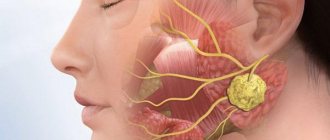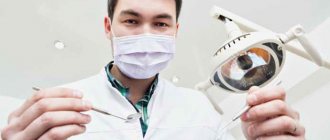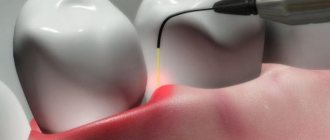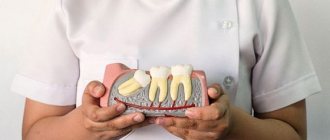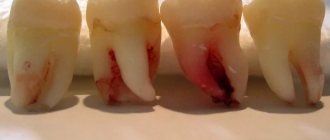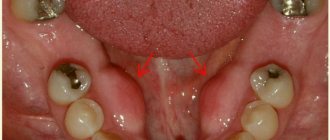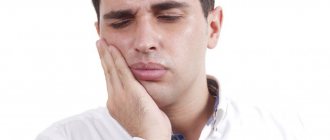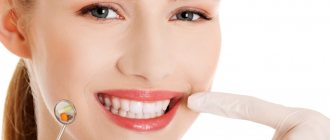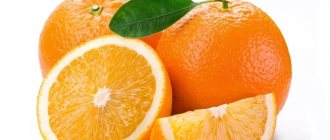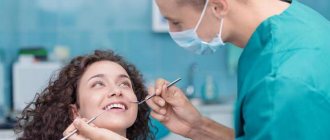general information
The main symptom of lockjaw is tension in the muscle tissue responsible for chewing. Often, the teeth are clenched, it is difficult to open the mouth, and it is not possible to speak or eat normally. When the cause of such spasms is unclear, a specialist tries to determine it. The subsequent action depends on the speed of diagnosis.
Sometimes jaw locking accompanies epileptic seizures, in such a situation it is necessary to inject the person with an antiepileptic drug. If rabies is suspected, the person should be taken to the hospital immediately. The main signs of rabies appear a few days after infection.
Patients experience:
- Insomnia.
- I have nightmares at night.
- Anxiety.
- Little moisture in the mouth.
- My muscles hurt.
The last stage of rabies is characterized by an increase in temperature to 42 degrees.
Causes
The appearance of trismus is characteristic of diseases that cause reflex irritation or damage to nerve tissue. Spasms are caused not only by foci of inflammatory processes, but also by a variety of systemic disorders.
There are several factors that provoke the disease:
- Inflammation in the tissues near the teeth, in the joint or lower jaw.
- Dislocation or fracture.
- Problems with the trigeminal nerve.
- Stroke or tumor in the head.
- Complication due to anesthesia.
- The periosteum becomes inflamed.
- The masticatory muscles are irritated due to pulpitis or carious processes.
- Arthrosis in the joints.
Trismus can occur due to a blow to the jaw or due to a sharp pouring of cold water on the head.
You need to monitor your own body, since trismus can manifest itself in the first stages of tetanus and even rabies. The likelihood of developing the disease increases in the following situations:
- Pseudobulbar palsy.
- Tetany.
- Epilepsy.
- Meningitis.
- Brain hemorrhage.
- Hysteria.
In addition to the above disorders, there is a possibility of spasm.
Description of the disease
What is lockjaw? This is a tonic spasm of the masticatory muscles, which appears due to irritation or damage to the nuclei of the trigeminal nerve of the brain.
There are two types of trismus:
- Bilateral (bilateral) - the most common, the lower jaw is pulled back, pressing tightly against the upper jaw. The patient is unable to speak due to the inability to open his mouth due to tightly clenched teeth, there is a problem with eating, and often it is necessary to administer nutrient solutions intravenously. This type occurs independently in the case of infectious and neurological diseases.
- Unilateral - occurs due to inflammation or injury associated with the left or right mandibular joint; when opening the mouth, the lower jaw is shifted to the painful side, the face is skewed.
DETAILS: Lump under the chin: 3 alarming reasons for its appearance
The main symptom will be a strong tension of the masticatory and temporal muscles, they are compacted and swollen: on both sides with a bilateral prism, on one side with a unilateral prism.
Associated symptoms
The main symptom of tonic spasms is considered to be complete or partial restriction of movements in the jaw joint. The mouth opens and closes poorly.
Additional symptoms:
- The muscles become denser and harder.
- Expand in volume.
- Pain when biting. Chewing and swallowing food is difficult.
- Pain during various muscle manipulations.
- Reproduction of speech function becomes difficult.
- During a bilateral spasm, the teeth are clenched.
- The face is distorted.
Signs of respiratory dysfunction and overexertion may occur. Prolonged spasm causes weight loss. Problems arise with the digestive system and in the functioning of various parts of the gastrointestinal tract due to the lack of adequate nutrition.
Treatment options
Treatment of trismus of the jaw is carried out after diagnosis and identification of provoking factors. Mild trismus is not associated with inflammation and trauma; you can get rid of such disorders at home. In such situations, doctors advise performing massage procedures and kneading the chewing muscles. You need to stroke. In this case, a painful symptom should not appear. Kneading is carried out to relax the muscles.
Alternating cooled and heated compresses are used to help relieve pain. Meditation and relaxation methods have many benefits. Trismus caused by local causes is eliminated with the help of dentistry.
Before reduction, anesthesia is administered. For this purpose, Botox or Novocaine . When purulent foci appear in the lower jaw, doctors open them and clean them of bacteria with medications. This way you can get rid of trismus.
When the cause of spasm is damage to the joints in the temples and lower jaw or arthrosis, doctors prescribe non-hormonal anti-inflammatory drugs. They help cope with pain.
Emergency assistance at the first suspicion of tetanus is provided by consuming serum or rabies vaccine, if there is an assumption that the patient is infected.
Hysteria and depression cause spasms of the masticatory muscles. This problem can be eliminated with the help of valerian and bromine. Such drugs have an anticonvulsant effect.
In difficult situations, stronger medications are used. Successful elimination of internal pathologies causes a gradual reduction and complete elimination of spasms in the masticatory muscles.
Treatment of jaw lockjaw
With trismus, the jaws are tightly clenched, so specialists have to resort to various kinds of tricks to establish the true causes of its occurrence and to bring it as close as possible to the patient’s normal lifestyle. So a medicinal injection is made into the damaged area or they try to open the jaws a little using special instruments so that the person can calmly eat food and not suffer from dehydration. Without the use of appropriate medications, all this, of course, does not lead to an improvement in the patient’s condition, but it becomes the right step on the path to success. The treatment itself can be carried out using sedatives (if trismus is of a neurotic nature), sulfonamide drugs (used for inflammation) and physiotherapy. You should not ignore the help of a dentist or facial surgeon if the reasons lie in their spheres of influence.
According to statistics, the number one cause of lockjaw is problems with the teeth and the entire oral area as a whole, so do not forget to promptly contact professional dentists and dental surgeons who have proven themselves to be exemplars in dentistry, implantology and reconstructive surgery. The specialist will make a correct diagnosis in a timely manner and begin treatment. Patients often confuse jaw lockjaw with a jaw fracture or arthrosis of the temporomandibular joint, postponing treatment “until better times.” Over time, lockjaw becomes less treatable and can lead to undesirable consequences.
Diagnostics
Trismus is diagnosed based on a visual examination of patients. It is distinguished from bone fractures, dental disorders, and arthrosis. Muscle spasms are symptoms; examination is used to diagnose the underlying disease. Patients are given a special agent if it is difficult for them to open their jaw for examination.
Elimination of trismus of the masticatory muscles implies treatment of the underlying pathology. To eliminate tension in muscle tissue, medications are used that have a relaxing effect.
When a spasm is caused by a neurotic condition, the patient is prescribed sedatives, bromides, and valerian. Trismus caused by inflammation in the mouth is eliminated by treating the infection and suppuration. Doctors open the abscess surgically, pull out the tooth, etc. You will also need to undergo a course of antibiotic treatment. Jaw injuries require reconstruction or reconstruction of the joints.
After anesthesia, trismus lasts about a week. This condition is not eliminated in a specific way. At this time, the patient needs to eat liquid food and perform gymnastic exercises, moving the lower jaw more often.
Therapy of systemic pathological infectious processes is performed exclusively in a hospital setting. Patients are given liquid under the skin by injection, and food is injected directly into the stomach through a tube.
Trismus symptoms
Most often, during an attack of convulsions, the jaws are tightly clenched. They cannot be opened independently, since the temporomandibular joint is completely or partially immobilized and the head hurts. The temporalis, masseter and internal pterygoid muscles are affected. With partial immobilization, a person can open his mouth only slightly, as a result of which the patient’s speech is impaired. With a one-sided course, the jaw moves in the opposite direction; the reasons can be dental, neurological, traumatic, or also be a consequence of the use of anesthesia.
READ ALSO: for what reasons does the jaw sometimes hurt on the right side?
Spasm of the lower jaw
Trismus often occurs as a result of injury. At the same time, pain is also felt at the site of the bruise when palpated. The injury may be indicated by external manifestations: abrasions, bruises, swelling. A jammed jaw may indicate a fracture or dislocation. When the trigeminal nerve is damaged, for example, during anesthesia, the spasm is accompanied by paroxysmal pain.
Important: trismus differs from a fracture, inflammatory and other diseases that do not allow the jaw to open due to the presence of hypertonicity. The chewing muscles and muscles in the temple area are extremely tense. When you touch them, a hardening in the form of a fossil is felt.
Brings cheekbones and jaw together
- Joint dysfunction, arthritis, arthrosis, vascular pathologies are the main causes of this condition. A lack of blood supply provokes spasms when chewing solid food due to their overexertion.
- If the ears are blocked at the same time, the cause is tonsillitis, pathologies of the larynx and oncology of the ENT organs.
- If teeth are cramped, chills and a feeling of heaviness in the chest appear, the cause may be a disruption of the cardiovascular system. Most often, this condition develops against the background of a hypertensive crisis, requiring emergency medical intervention. Cardiac disorders may be accompanied by numbness of the extremities and loss of sensation in the fingers.
Spasm occurs when yawning
Trismus can occur under severe mechanical stress due to intense yawning. First, hypertonicity appears, then spasm itself. After 20-30 minutes, the cramp may go away on its own, but in some cases qualified medical assistance is necessary. Most often, this is a simple muscle strain that goes away on its own.
Spasm accompanied by headache
Trismus, accompanied by severe headache, can occur due to neurosis with hypertonicity of the masticatory muscles. Severe psycho-emotional overload is manifested by discomfort under the chin, a feeling of pain is accompanied by numbness of the teeth. A person may feel as if their teeth are bothering them.
This condition is not stable; it can manifest itself most intensely at work associated with systematic stressful situations and an unfavorable environment. In a calm state, improvement occurs. This condition has nothing to do with dentistry. Reduces muscles on the face for the following reasons:
- for fatigue or migraine,
- spinal injury,
- prolonged work in a sitting position.
Bruxism
Bruxism is characterized by clenching of the jaw, tension in the cheekbones and periodic grinding of teeth. Most often, deterioration of health occurs at night. In the morning a person wakes up feeling exhausted and has a headache. Systematic grinding of teeth leads to injury, damage to the enamel and gradual loosening of the row. Why it occurs is difficult to say.
Untreated bruxism causes damage to the facial joints, impaired function, and destruction of the gums and jaw bones. The complexity of the disease lies in the fact that it is impossible to identify it on your own. The problem can be detected at a dentist's appointment by the removal of enamel and scratched teeth.
Trismus while eating
Trismus while eating due to overstrain of the masticatory muscles may indicate minor hidden injuries to the jaw joints. The problem most clearly manifests itself when chewing or biting off hard pieces. Subluxation of the jaw allows one to eat independently, but opening the mouth is accompanied by involuntary contraction of muscle tissue. Jamming of the jaw after eating can occur due to spasm of the esophagus when consuming very acidic foods or alcohol.
Other manifestations of spasm of the masticatory muscles
- When an artery on the face is inflamed, the spasm alternates between the left and right sides, and the head hurts (see photo). In this case, the pain radiates to the corresponding eye.
- Chronic pain in the jaw area with periodic cramps may be a consequence of a facial tumor. In this case, the pain progresses as the tumor grows larger. Gradually, from a pulsating state it turns into aching pain.
- Trismus in polio is accompanied by tension in the masticatory muscles and a high temperature of over 40°. A similar symptom occurs with tonsillitis and peritonsillar abscess. Self-treatment cannot be carried out. In such a condition, hospitalization in a hospital is necessary.
Prognosis and prevention
Trismus after anesthesia for inflammation of the oral cavity or injuries will not have negative consequences. In most cases, the work of the masticatory muscles resumes within 1-3 weeks. With systemic disorders, the likelihood of a full recovery is not so high.
The worst prognosis occurs during rabies; such a disease is always fatal.
To prevent trismus, you need to eliminate inflammatory foci in the mouth in time, take a vaccine against tetanus and rabies, and avoid injuries and regular stress.
